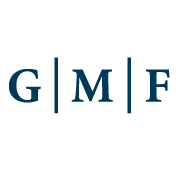Fri, 05/16/2014 - 09:24
Recalibrating Transatlantic Aid in an Era of Emerging Donors

As the transatlantic allies ponder the future of aid collaboration, recalibrating U.S. and European aid given the increased involvement of countries such as China and India should be placed front and center. As their economies and material strengths swell, rising powers have continued to augment aid provision abroad. China has expanded bilateral development assistance several fold, Turkey’s development agency is operational in 33 countries, and India will soon launch an aid provider. Other middle-tier emerging economies — from Mexico to Indonesia — are also expanding aid provision. In so doing, these emerging donors have arisen as alternative options for aid, and have often employed less-conditional approaches than the West.
While this aspect of the world order is clearly in transition, the United States and EU should leverage their dominant position in order to shape how aid is provided moving forward and thereby secure their interests. This will likely require consolidating priorities, objectives, and resources, updating their aid packages to be more attractive to recipients, and influencing the spending and objectives of emerging donors.
Where strategic interests overlap, the United States and Europe should also expand aid collaboration with rising powers. Policy statements have rightly called for burden-sharing with emerging centers of influence and have described initial steps for doing so.However, the United States and EU should go further and consider clear avenues and associated mechanisms to engage like-minded emerging donors on aid-related issues of shared importance. In pursuing these avenues of collaboration, the Atlantic democracies could learn and leverage best practices from existing South-South and Triangular Cooperation (SSTC) between the United States and emerging powers such as South Africa (in South Sudan) and Brazil (in Mozambique). Areas where results matter more than who gets the credit — such as conflict prevention and management — are ripe for this form of engagement.
But the United States and EU should also extend engagement to the not-so-like-minded, and this is particularly applicable to the case of China. Western donors could identify neutral issues for aid-related cooperation with China in regions of shared importance. To begin, this could involve collaborating on water, sanitation, and hygiene programming in sub-Saharan Africa. These forms of engagement would not entail cooperation for cooperation’s sake. Rather, they would be mutually beneficial partnerships that — in addition to providing cost-savings and potential development gains — could lay the basis for tackling bigger issues over the coming decades, from climate change to the next Syria.
Equally important to engaging emerging powers, however, is maximizing aid spending and reinforcing Western positions on its provision. Accordingly, the United States and EU should deepen and further institutionalize cooperation on aid including objectives, approach, and spending. Short-term steps should focus on maximizing aid spending by constructing a viable division of labor between the United States and Europe. As the U.S. 2010 Global Development Policy rightly notes, Washington “cannot do all things, do them well, and do them everywhere.” And the same goes for Europe. Building from plans already established via the Development Dialogues for cooperation in a handful of priorities and geographic areas, the United States and EU should take stock of aid priorities across all technical areas — from democracy and governance to education — and regions. This review could result in a 15 to 25 year strategic framework of priorities for all technical interventions and regions as well as a work plan for dividing responsibilities in these areas. A long-term objective for the allies could be to move toward a consolidated U.S.-EU development institution where pooled resources are implemented through common delivery mechanisms.
Equally important as consolidating priorities within the transatlantic alliance, however, is solidifying its approach to those countries outside of it. Accordingly, the United States and EU should use the Development Dialogues to align priorities and positions vis-à-vis emerging aid providers — and then leverage these shared positions to influence emerging donor spending and priorities. The United States and Europe cannot curb emerging power participation in an aid sphere theyhave dominated for 50 years. However, by strategically engaging rising assistance providers and further institutionalizing transatlantic aid cooperation, the allies can secure their core interests as well as reinforce and continue to project principles undergirding liberal world order.
Patrick W. Quirk is a fellow at the Transatlantic Academy of the German Marshall Fund in Washington DC.
Tags for all blogs :
Comments or opinions expressed on this blog are those of the individual contributors only, and do not necessarily represent the views of FRANCE 24. The content on this blog is provided on an "as-is" basis. FRANCE 24 is not liable for any damages whatsoever arising out of the content or use of this blog.





0 Comments
Post new comment